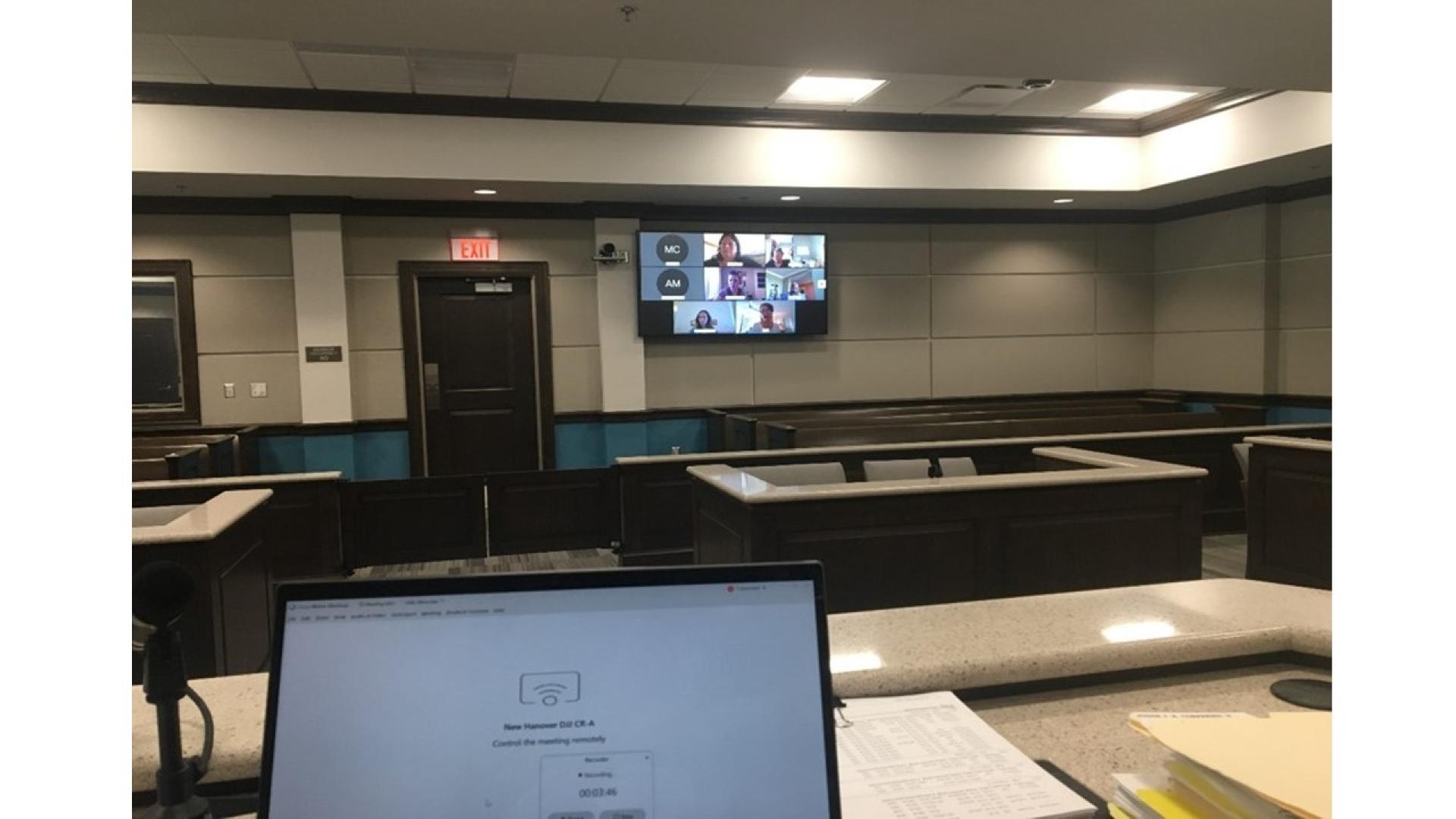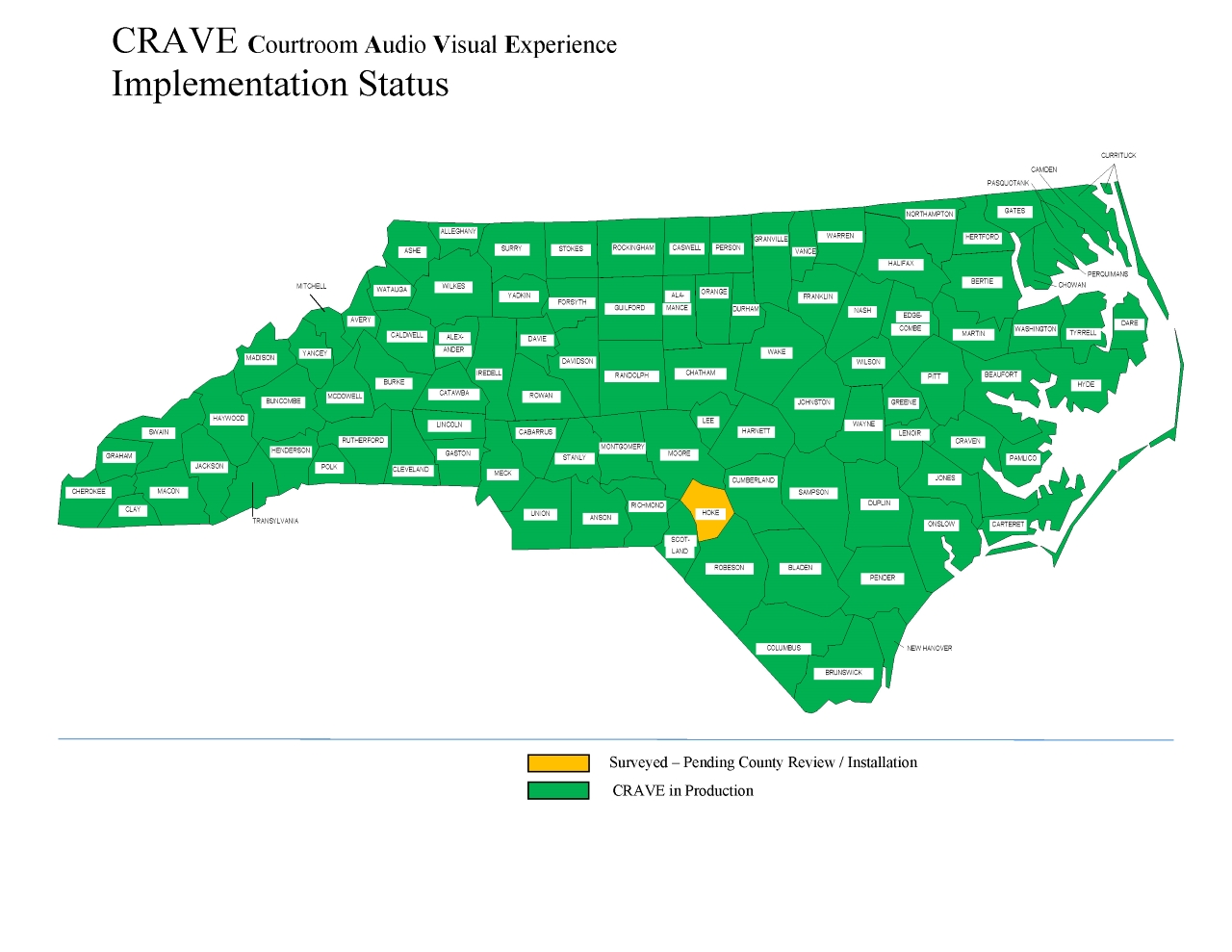CRAVE (Courtroom Audio Visual Experience) Project
The Judicial Branch has launched the CRAVE (Courtroom Audio Visual Experience) Project to further enhance the capability to safely and securely hold remote court proceedings. The immersive courtroom audio video infrastructure inside the courtroom includes numerous cameras, microphones, and monitors.
NCAOC TSD personnel are working directly with each county to achieve these CRAVE Project Milestones
- Survey
- Site Plan Review / Approval
- County Build-Out
- Installation Scheduling
- Implementation Complete
|
These courtroom systems integrate with Webex technology, and will include HD monitors, HD cameras, and audio for attorney, judge, and witness use during remote proceedings. A public kiosk located in the courthouse will be connected with the system and allows self-represented litigants to make an appearance outside of a courtroom. The technology will greatly reduce the need for an in-person appearance in some cases and reduce courthouse foot traffic. |
 |
NCAOC has been provided funding that will allow two (2) full system installations. If a county is interested in additional systems, TSD personnel can provide cost and spec information for counties to purchase additional systems.
CRAVE County Purchased SystemsShould a county decide to install extra CRAVE systems, beyond those allotted by NCAOC, the county will need to complete a Memorandum of Agreement (MOA) which outlines county and NCAOC responsibilities associated with those system(s).
CRAVE County CablingShould a county need to defer the cost of the cabling required to support the CRAVE system, NCAOC can cover that upfront cost with an agreement from the county to reimburse NCAOC at a later date. The MOA for deferred cabling fees is forthcoming.
The project will deploy over 200 courtroom systems and 200 kiosks across sites in all 100 counties.
Announcements
